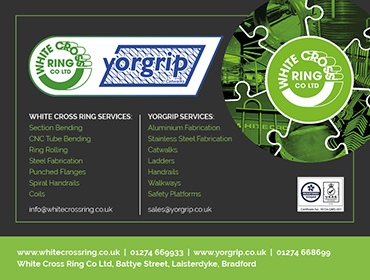
Fencing in gardens serves multiple purposes, from setting boundaries to providing privacy, security, and aesthetic appeal. As a garden owner or enthusiast, choosing the right fencing material that suits your needs and environment is essential.
That’s because the material is pivotal in determining the fence’s durability, functionality, and visual impact. This article delves deep into steel as a fencing material, compares it with other popular options, and provides insights into its maintenance.
UNDERSTANDING DIFFERENT FENCING MATERIALS
Common choices include wood, vinyl, bamboo, wrought iron, aluminium, and steel.
Each of these materials has unique pros and cons, determined by factors like climate compatibility, aesthetic preference, budget constraints, and the purpose of fencing. Let’s look at what each of these materials has to offer:
Wood: a natural and traditional choice that offers a classic look, which can be painted or stained for different effects.
Vinyl: a durable and maintenance-free option that resists insect infestation and rot. It’s available in various colours and styles.
Steel: a sturdy and versatile material known for its longevity and robustness.
Bamboo and composite: eco-friendly options that combine various materials to offer unique advantages.
Chain link: a cost-effective, durable, and see-through option often used for security purposes.
STEEL FENCING: A DETAILED LOOK
Steel fencing is typically made of galvanised steel or is coated with zinc to prevent rust. As a fencing material, it stands robust against various environmental challenges, making it ideal for areas with harsh weather conditions. Steel fencing can either be galvanised, ensuring resistance against rust, or it can be made from stainless steel, which naturally repels rust.
Aesthetically, steel fences offer a sleek, modern look, complementing residential and commercial exteriors. They can be painted or coated, providing flexibility in terms of colour and design. Steel is often preferred in security-sensitive areas due to its formidable strength.
The main benefits of steel fencing are:
Strength: steel fences can withstand strong winds and physical impacts and deter intruders.
Durability: when adequately maintained, steel fences can last for decades.
Aesthetics: they can be designed in various styles and can be painted or coated to suit any landscape.
Security: steel fencing is an excellent option for security concerns due to its strength.
However, its potential drawbacks and considerations are:
Cost: steel can be pricier than other materials.
Weight: it’s heavy, which can make installation challenging.
Rust: without proper coating or maintenance, steel can rust over time.
COMPARING STEEL WITH OTHER FENCING MATERIALS
STEEL VERSUS WOOD
This stage starts with procuring raw steel, which is cut, bent, and shaped per design specifications. These pieces, now termed ‘workpieces’, are assembled and joined, often through welding.
Wood exudes a classic, natural charm, making it a favourite for those seeking a rustic appeal. However, when compared with steel, wood is less durable and is susceptible to pests, rot, and decay. While steel may require occasional painting or rust-proofing, wood requires frequent treatment with preservatives and might need replacement planks over the years. Steel, on the other hand, with its inherent strength, is likely to stand the test of time with minimal intervention.
Durability: steel generally outlasts wood, which can be susceptible to rot, termites, and weathering.
Maintenance: steel requires less maintenance than wood, which needs periodic staining or painting.
Aesthetics: wood offers a natural look, while steel can be more industrial; it can be painted to fit various styles.
Cost: wood can be more affordable initially, but considering longevity and maintenance, steel might be cost-effective in the long run.
STEEL VERSUS VINYL
Vinyl fencing is known for its versatility and minimal maintenance needs. Unlike steel, vinyl doesn’t rust or require painting. However, vinyl can become brittle over time, especially in extreme cold. Steel remains unaffected by temperature variations, rendering it more durable in fluctuating climates.
Strength: steel is generally stronger than vinyl.
Longevity: both materials can last for decades, but vinyl might fade or become brittle over time.
Design options: vinyl offers a wide range of design and colour options, while steel’s design can be limited but more robust.
Pricing: vinyl can be more cost-effective, but steel offers superior strength.
MAINTENANCE AND CARE FOR STEEL FENCING
To ensure the longevity of a steel fence, regular maintenance is critical. Here are some tips:
Regular cleaning: use a mild detergent and water to clean off dirt or debris. This helps in preventing the buildup of rust.
Check for rust: even if your fence is galvanised, inspect it regularly for signs of rust. If found, sand it off gently and apply a rust-proofing solution.
Repainting: If the paint starts to chip or fade, consider repainting your steel fence to maintain its aesthetic appeal and protect it from the elements.
Lubricate joints and hinges: if your steel fence has gates, ensure the joints and hinges are lubricated to prevent wear and tear.
Long-term considerations and care tips: consider the local climate, as humid and salty environments can accelerate rusting. Invest in quality coatings and treatments.
MAKING YOUR DECISION: KEY FACTORS TO CONSIDER
In conclusion, the key factors you’ll need to consider when making your final decision are:
- Budget: understand your budgetary constraints and the long-term costs of each material.
- Aesthetics: consider what style and look you want for your garden.
- Durability: some materials, like steel, will last longer than others.
- Maintenance: how much effort are you willing to put into fence care?
- Local climate: some materials fare better in specific climates.
When it comes to matching the fence material to the garden’s design, the fence should complement the garden’s style, whether modern, rustic, or traditional. It should also enhance the overall appeal and functionality of the space.
The choice between steel and other fencing materials depends on individual needs, aesthetics, and budget; however, steel remains a top contender in garden fencing with its blend of durability and elegance. Considering all these aspects, you can make an informed decision that best suits your garden.













